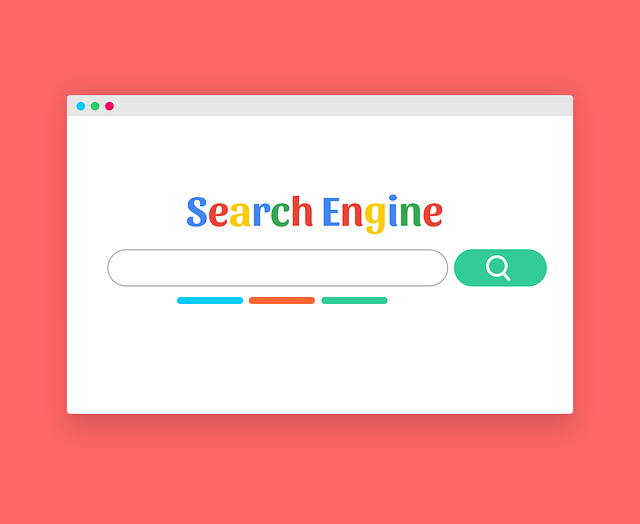SEO internal links are essential for optimizing website performance and user experience. By strategically placing links between relevant pages, search engines better understand your site's content hierarchy, improving crawlability and boosting rankings. This enhances visibility on search engine results pages (SERPs), drives organic traffic, and reduces bounce rates. Beginners should focus on identifying key content like evergreen articles, while advanced users can leverage tools to analyze user navigation and optimize CTRs, bounce rates, and session durations. Regular reviews ensure the internal linking strategy remains effective and aligned with algorithm changes.
“Unleash the power of SEO internal links and elevate your website’s visibility! This beginner’s guide offers a comprehensive journey through the fundamentals of internal linking, a crucial aspect of search engine optimization (SEO). From understanding the concept to identifying key pages and optimizing user experience, we demystify each step. Learn how strategic internal linking improves crawlability, enhances user engagement, and drives organic traffic. Discover the benefits, master best practices, and explore practical tips to transform your website into a SEO powerhouse.”
- Understanding SEO Internal Links: A Beginner's Perspective
- The Role of Internal Linking in Search Engine Optimization
- Key Benefits of Implementing Effective Internal Links
- Identifying Important Pages for Internal Linking Strategies
- Creating a Seamless User Experience Through Internal Linking
- Measuring and Optimizing Your Internal Linking Performance
Understanding SEO Internal Links: A Beginner's Perspective

Internal linking is a fundamental aspect of Search Engine Optimization (SEO) that often confuses beginners. However, it’s a powerful tool to drive traffic and enhance your site’s visibility on search engines like Google. At its core, SEO internal links are connections between pages within your website that help search engine crawlers understand the hierarchy and relevance of your content. This simple yet strategic practice improves user experience by enabling visitors to navigate through related resources effortlessly.
When you optimize your internal linking, you’re essentially guiding search engines on which pages are most important and how they relate to one another. This can be done through a variety of SEO internal links tips, such as using relevant anchor text, ensuring a logical site structure, and prioritizing high-quality content. By incorporating these practices into your content strategy, you not only improve the SEO of individual pages but also create a robust network that boosts overall website performance in search engine rankings.
The Role of Internal Linking in Search Engine Optimization

Internal linking plays a pivotal role in Search Engine Optimization (SEO), acting as a crucial bridge between your website’s pages and search engine algorithms. By strategically integrating SEO internal links within your content, you guide search engines to understand the hierarchy and relevance of your webpages. This, in turn, enhances crawlability, ensuring that search engine bots can efficiently navigate your site’s content.
Moreover, SEO internal links optimization fosters a better user experience by creating a seamless flow between related pages. Acting as a tutorial for both users and search engines, these links signal the importance of certain pages while providing valuable context. Following best practices in SEO internal links tips, such as using descriptive anchor text and placing links naturally within content, can significantly boost your website’s visibility and ranking potential on search engine results pages (SERPs).
Key Benefits of Implementing Effective Internal Links

Implementing effective SEO internal links offers numerous advantages for beginners and experienced website owners alike. One of the key benefits is enhanced user experience. By strategically placing internal links, you create a seamless journey for visitors across your site, allowing them to easily navigate related content. This not only keeps users engaged but also improves bounce rate and session duration, which are crucial SEO metrics.
Moreover, SEO internal links optimization plays a vital role in boosting your website’s search engine rankings. Search engines like Google use internal links as signals to understand the hierarchy and relevance of your webpages. A well-planned SEO internal links strategy can help distribute link equity throughout your site, strengthening its overall authority. This, in turn, increases visibility in search results and drives more organic traffic to your website.
Identifying Important Pages for Internal Linking Strategies

When crafting an effective SEO internal linking strategy, beginners should start by identifying their website’s most important pages. These are usually the core content pieces that form the foundation of your online presence and carry significant weight in search engine rankings. For instance, a blog with established authority on specific topics will want to link to comprehensive guides or “evergreen” articles that consistently attract traffic and provide value to readers.
Focusing on these essential pages first ensures that your internal linking efforts are directed towards the most influential content. An SEO internal links tutorial would recommend analyzing page metrics, such as high-traffic areas and popular search terms, to uncover key assets. This strategic approach optimizes the site’s architecture, making it user-friendly and enhancing the overall SEO internal links strategy by guaranteeing that important pages are readily accessible to both users and search engines.
Creating a Seamless User Experience Through Internal Linking

Creating a seamless user experience is paramount for any website’s success, and internal linking plays a pivotal role in achieving this. By strategically placing SEO internal links throughout your content, you guide visitors naturally to related pages, fostering a sense of exploration and discovery. This not only enhances user engagement but also improves the overall site navigation, allowing users to find what they’re looking for without frustration.
Implementing effective SEO internal links tips involves understanding your audience’s needs and behaviors. A well-crafted internal linking strategy ensures that relevant content is readily accessible, reducing bounce rates and encouraging deeper engagement with your website. When executing this SEO technique, consider both the context of each page and the keywords or topics they cover. This thoughtful approach contributes to a robust SEO internal links SEO strategy, making your site more user-friendly and search engine optimized.
Measuring and Optimizing Your Internal Linking Performance

Measuring and optimizing your internal linking performance is a crucial step in any SEO internal links strategy. Tools like Google Search Console and Google Analytics provide valuable insights into how users navigate your site, helping you understand which pages are performing well and where improvements can be made. By analyzing click-through rates (CTRs), bounce rates, and session durations, you gain data-driven insights that inform your SEO internal links optimization efforts.
A robust SEO internal links tutorial involves creating a strategy that balances relevance and user experience. Linking to authoritative pages within your site not only enhances its credibility but also guides users towards valuable content. Regularly reviewing and updating your internal linking structure ensures that your SEO internal links remain effective, allowing you to stay ahead of algorithm updates and continue attracting organic traffic.
